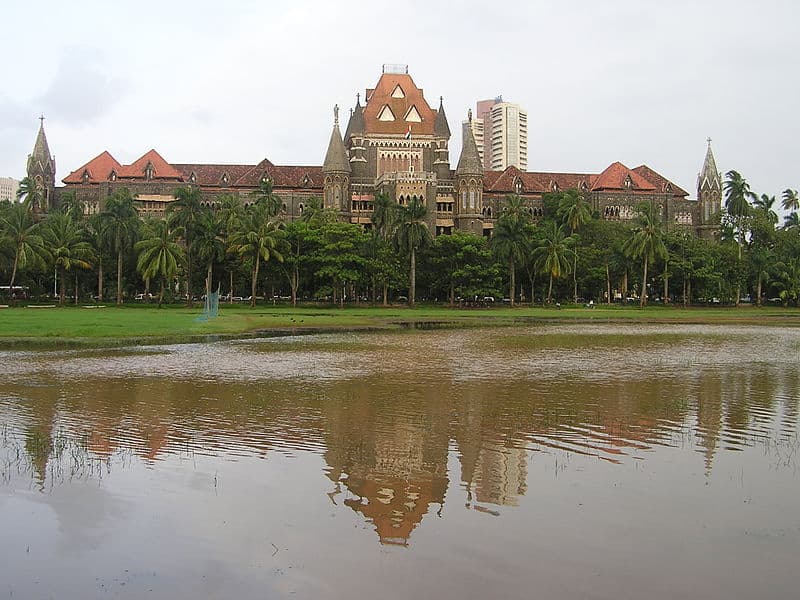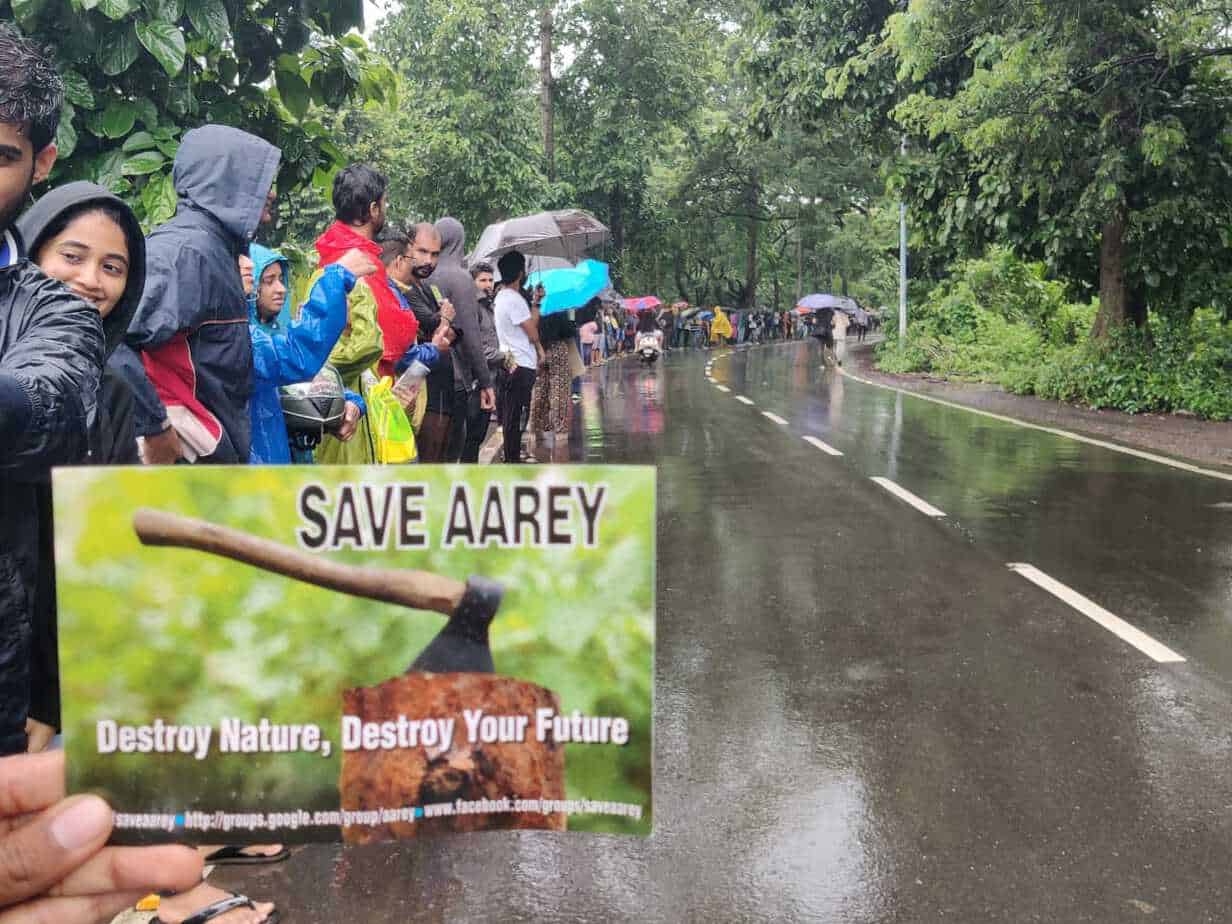The Bombay High Court (HC) has become the last recourse for citizens to save Mumbai’s miniscule tree cover — less than a tree per head as aganst the world standard of seven trees per head. The city’s few remaining trees are facing the axe from large, high-profile infrastructural projects.
The High Court is playing the role meant to be played by the Mumbai’s Tree Authority, a statutory body set up following promulgation of the Maharashtra (Urban Areas) Protection and Preservation of Trees Act, 1975. From getting the Tree Authority suspended for nine months, probably for the first time, and insisting on geo tagging of all new plantations in the city, the High Court is standing up to save the city’s green cover.
The Tree Authority had for long led a low profile existence, quietly and without much fuss, issuing permissions to cut trees to make way for the city’s rapid urbanization and infrastructure projects. Currently comprising 13 political nominees (ruling and opposition party corporators), and chaired by the BMC commissioner, its decisions are binding and cannot be overruled but by the courts. Though a body meant essentially to protect and replenish Mumbai’s tree cover, a Public Interest litigation (PIL) in the HC revealed how the ruling dispensation had run it to suit their own purposes and undermined its intended role.
The PIL, filed by Zoru Bhathena, a businessman and tree activist, exposed how the city’s TA functioned without the mandatory nominated experts (like botanists and agriculturists) on its panel, thus allowing a free run for politicians to function without the mandatory checks and balances. Though his initial petition, filed in 2015, was to save trees in Mumbai, his meticulous research (for instance, he cited the exact number of dead trees from his place of travel between Khar and Kandivli in his petition), sharp legal citations, strong integrity (the judges posed many personal queries to verify his credentials) and clarity of purpose got the HC to introduce significant changes in the BMC’s flawed tree policy and check its procedural lapses.
The original Act had specified that experts be nominated by the municipal commissioner based on their work experience and field of study, to be part of this panel, a requirement conveniently ignored by the BMC. The HC suspended the Tree Authority’s decision making powers for nine months from October 2018 to June 2019. While the TA held its meetings every 21 days as mandated and could ponder over its allied roles like maintaining nurseries, encouraging tree plantations and hosting annual flower-fruit shows, it could not decide on the fate of trees in city.
“The TA had ended up as a body that only sanctioned cutting of trees, in contravention of its own duties. Since the Brihanmumbai Municipal Corporation (BMC) collects Tree Cess from its citizens as part of property tax, its TA was duty-bound to protect, preserve and replenish tree cover in Mumbai,” said Bhathena. Since filing the first PIL in 2015, the issue picked up steam leading to a series of addendum petitions related to trees, raising several critical issues and reaping significant interim orders to enhance the lives of 2,97,5283 trees in Mumbai, besides the 4,84,761 in Aarey alone, as per the last conducted tree census.
Courts force changes in tree panel
For starters, BMC was forced to nominate experts like botanists, agriculturists or members of NGOs registered with the forest department on its tree panel. The HC also ordered that scientific remarks of such experts should only be in writing and not oral and if the TA panel chose to go against the views of experts, they would have to record it with reasons.
That the politicians managed to surreptiously garner support even from these newly nominated green experts in voting to cut 2646 trees to make way for a metro shed, is an altogether different issue. Following huge public criticism and denouncement from their parent organisations, two experts resigned from the Tree Authority panel citing their opposition to tree cuttings.
The courts also got the TA to call for public objections and conduct public hearings for large scale tree cuttings for major projects. The TA conducted three such public hearings recently. On July 8, 2019 about 500 people (backed by around 79,000 online objections) turned up despite heavy rains to protest cutting of 2702 trees in Aarey. On August 27, vocal opposition from about 100-odd citizens (along with 10,000-odd online objections) got TA to send back the proposal to cut 1821 trees for certain Metro projects. Such hearings have only highlighted the public ire against indiscriminate felling of trees in the name of infrastructure projects.
The HC also ordered that henceforth, BMC must issue public notices calling for objections on tree cutting proposals only in prominent newspapers and not in obscure regional ones, as was the norm to avoid public attention.
Though court orders forced the BMC to introduce these and other changes, most of these provisions already existed in the relevant Act and rules, but had remained on paper. The HC has also ordered the BMC on digitally geo tagging all its trees to ensure proper enumeration and documentation.
The Maharashtra (Urban Areas) Protection and Preservation of Trees Act, 1975, for instance, envisaged the Tree Authority of every municipal corporation in the state as the single body responsible for all aspects of a tree, from planting to maintaining to encouraging and enhancing the tree cover of that city. It was expected to hold tree plantations, develop and maintain nurseries to provide saplings, seeds etc, ensure trees were not cut without permission, allow felling of trees only when necessary and only after due scrutiny. It was also expected to ensure that that a city’s tree cover did not get affected by development projects, by insisting on compensatory and transplantations at different locations.
But Tree committee members reveal deliberations mostly pertained only on cutting of trees for the many development projects. Roughly, the Mumbai TA hears orders for felling of about 14000-15,000 trees per annum. A detailed scrutiny by Bhathena revealed about 49 notices for cutting 806 trees were received in in January, 2018 alone. Large scale projects on the anvil, like Metro, Mumbai Trans Harbour Link Road etc, involving felling of thousands of trees (the Metro project needs over 6829 trees to be cut) has now brought the role of the TA into sharper focus.
Politics of tree felling
Rising green awareness had made tree fellings a sensitive issue, with no political party (except the pro-development Bharatiya Janata Party) willing to support cutting of trees. Political differences among Mumbai’s ruling alliance partners, the Shiv Sena and the BJP have turned deliberations in the TA into a slugfest over trees. On paper, the Sena with six members seems to have the upperhand over the BJP’s four (one member Manoj Kotak resigned on gettng elected to Parliament) and the opposition parties like Congress (2 members) and Nationalist Congress Party (on member) in the 19-member panel that also includes the municipal commissioner and five experts.
Political parties are granted seats here based on their party strength in the corporation and the experts are chosen by the municipal commissioner.
Most recently, battle lines were drawn over felling of 2646 trees (including 461 to be transplanted) in Aarey. The TA panel had earlier held a site visit at Aarey to speak to tribals affected by the metro project.

